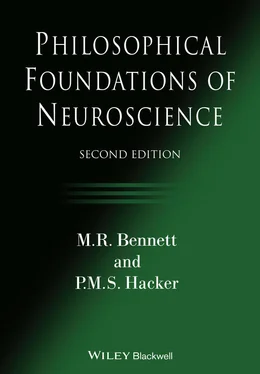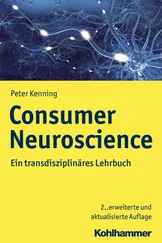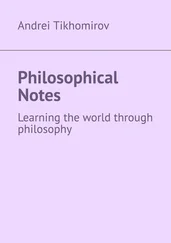1 ...7 8 9 11 12 13 ...47 The final misconception against which we wish to warn is the idea that our reflections are unremittingly negative. All we are concerned with, it might be thought, is criticizing. Our work may appear at a superficial glance to be no more than a destructive undertaking that promises neither assistance nor a new way forward. Worse, it may even appear to be engineering a confrontation between philosophy and cognitive neuroscience. Nothing could be further from the truth .
We have written this book in admiration for the achievements of twentieth-century neuroscience, and out of a desire to assist the subject. But the only ways in which a conceptual investigation can assist an empirical subject are by identifying conceptual error ( if it obtains) and by providing a map that will help prevent empirical researchers from wandering off the high roads of sense. Each of our investigations has two aspects to it. On the one hand, we have tried to identify conceptual problems and entanglements in important current theories of perception, memory, imagination, emotion and volition. Moreover, we argue that much contemporary writing on the nature of consciousness and self-consciousness is bedevilled by conceptual difficulties. This aspect of our investigations is indeed negative and critical. On the other hand, we have endeavoured, from case to case, to provide a perspicuous representation of the conceptual field of each of the problematic concepts. This is a constructive endeavour. We hope that these conceptual overviews will assist neuroscientists in their reflections antecedent to the design of their experiments. However, it cannot be the task of a conceptual investigation to propose empirical hypotheses that might solve the empirical problems faced by scientists. To complain that a philosophical investigation into cognitive neuroscience has not contributed a new neuroscientific theory is like complaining to a mathematician that a new theorem he has proved is not a new physical theory.
It is improbable that many neuroscientists will wish to read a 450-page conceptual investigation from cover to cover. Consequently, we have tried to make our chapters on select psychological concepts as self-contained as possible. We have done this in the hope that the book will serve as a conceptual reference work for cognitive neuroscientists who wish to check the contour lines of the psychological concept relevant to their investigation. This has, of course, meant that there is a degree of repetition between certain chapters. This is, we hope, warranted by the objective.
The chapters of the book are accompanied by italicized marginalia indicating the subject under discussion in the correlated paragraph or paragraphs. The purpose of this is to facilitate surveyability, to make it easier to follow the steps in the argument, and to assist in locating arguments. The section headings in the table of contents are accompanied by the italicized names of neuroscientists (and occasionally philosophers who concern themselves with neuroscientific and cognitive scientific matters) whose theories are either discussed in some detail or mentioned en passant in the course of the chapter. This will, we hope, help the reader to locate the themes and discussions that are of specific interest with ease.
Introduction to the Second Edition
Philosophical Foundations of Neuroscience was written at the beginning of the century. It has been widely read and often cited, and has provoked extensive debate that, we hope, has been fruitful. Our publishers, Wiley Blackwell, suggested that we write a second edition to bring the book up to date in the light of the discoveries, new theories and novel conjectures that have emerged in the field of cognitive neuroscience over the last two decades. They offered us the possibility of extending the book by an extra hundred pages in order to do so.
After careful deliberation we decided to accede to the request. This introduction to the new edition is directed primarily at readers of the first edition who wish to know why we thought fit to write a second edition, and would like to attain an overview of what we have added or modified.
Four reasons moved us:
First, new technical developments in neuroscience, such as fMRI, were often highly problematic and new discoveries concerning blindsight and commisurotomy challenged previously received understanding. This called out for systematic clarification. Moreover, new cognitive neuroscientific doctrines were developed by Tononi and Dehaene and their research groups and demanded conceptual elucidation and evaluation.
In the twenty years since the first edition of this work there have been very substantial increases in the literature of cognitive neuroscience devoted to subjects of interest in the present work. This has required an updating of our discussions of the neuroscientific literature. For example, the over 500,000 papers using functional magnetic resonance imaging ( f MRI ), many of which are concerned with localization of brain function in relation to the exercise of psychological powers, have necessitated a brief description of this technique, introduced by Ogawa following Sherrington. This is given in §1.7 [§§1.7.1–1.7.2]. Recent observations that have been made on the origins of the Readiness Potential, used by Libet to support the claim that willed volitional movements are preceded by the early components of this potential, are sketched in §9.2. ‘Blindsight’ is a phenomenon, first researched in the twentieth century by Weiskrantz, which, in the first edition of Philosophical Foundations of Neuroscience , we showed to have been misinterpreted as a disconnect of a monitoring function in the brain that mediates sensation and perception. It is now thought to have a quite different explanation by reference to an alternative pathway that bypasses the visual striate cortex altogether. Commissurotomy was argued many decades ago by Sperry and Gazzaniga to give rise to ‘two minds’ in the same brain, a claim which again required conceptual clarification and criticism. Like ‘blindsight’, this too has now been challenged on neurophysiological grounds. We comment on the new observations concerning both these phenomena in chapter 17. Finally, there are theories on how the brain supports consciousness based on recent neuroscientific observations that require extensive connective conceptual analysis, such as the Integrated Information Theory of Tononi and the Global Workspace Theory of Dehaene. This analysis is provided in chapter 12.
This is a work of philosophical or conceptual clarification, so we have attempted to keep the technical aspects of neuroscience to a minimum. ( Extensive technical discussions are to be found in our 2008 book History of Cognitive Neuroscience .) But what we have introduced should help sketch the contemporary landscape of that subject, whose actual achievements need clarification.
Second, there was a misunderstanding concerning the subject of the book. Many reviewers and critics thought that the central subject of Philosophical Foundations of Neuroscience was the mereological fallacy in neuroscience, that is: the mistake of ascribing to the brain – a mere part of the human being, and to parts of the brain – such as the visual striate cortex, the frontal cortices, the amygdala and so forth, psychological, intellectual and volitional attributes which can logically be attributed only to the human being as a whole. This categorial mistake leads to flaws in reasoning, that is: to fallacies. We gave the impression to some reviewers that all 452 pages of the first edition were dedicated to displaying this mistake and refuting this fallacy. But this is to mistake a leitmotif for the opera itself. In the first edition, we dedicated a part of chapter 3to the matter of ascribing to parts of the brain properties of the organism as a whole. In the new edition we have segregated this into an independent ( chapter 3), separating it from a range of further fundamental conceptual entanglements ( chapter 4). These include the subjects of self-ascription of experience, of introspection as a form of inner sense, of knowledge of the mental states, events and processes of other people, of privacy and subjectivity, of identity of experiences, of naming and describing experiences and of constitutive evidential grounds. These misunderstandings are not aspects of the mereological fallacy in neuroscience. They are severally and collectively no less important.
Читать дальше












